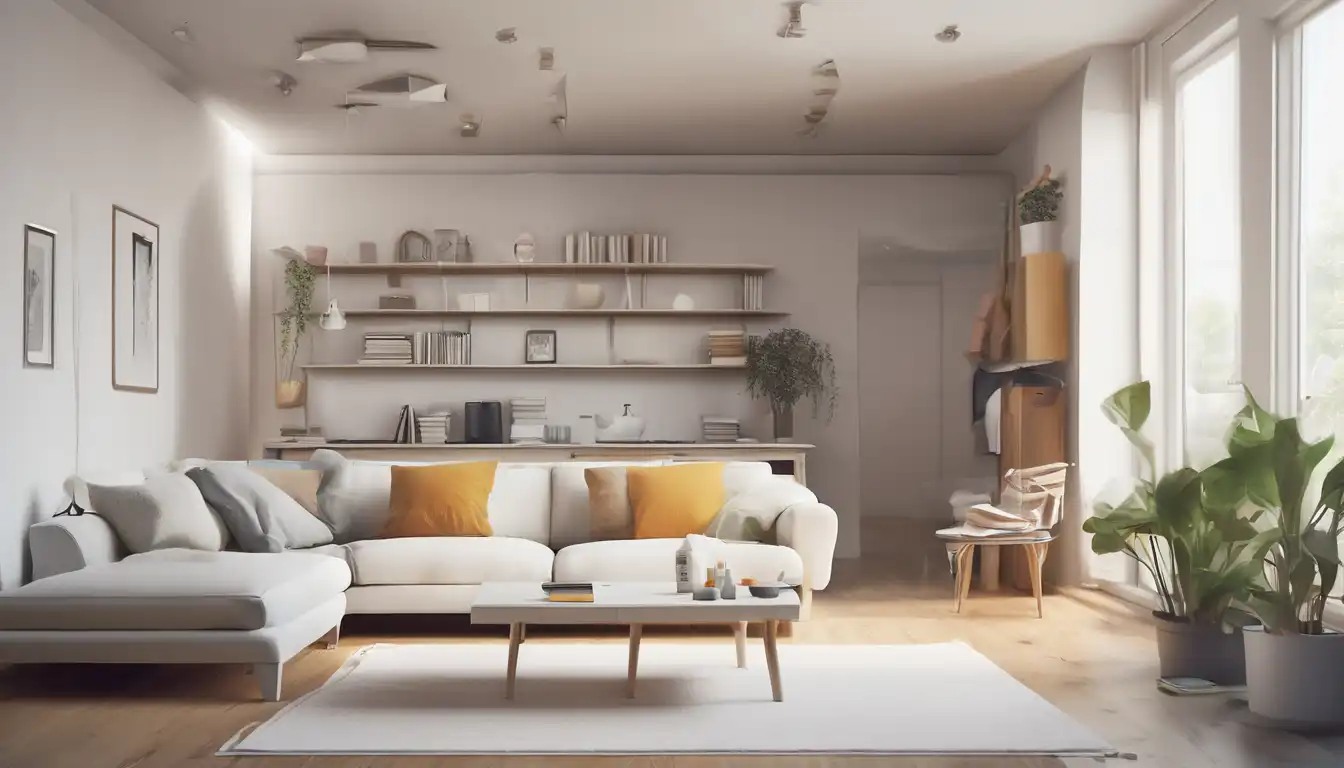Why Minimalist Living Transforms Your Life
Minimalist living isn't just about having fewer possessions—it's a mindset shift that creates space for what truly matters. By embracing minimalism, you reduce stress, save money, and gain more time for meaningful experiences. This comprehensive guide will walk you through practical strategies to achieve a clutter-free life that aligns with your values and goals.
Start with the Right Mindset
Before you begin decluttering, it's crucial to understand why you're pursuing minimalism. Are you seeking more freedom? Less stress? Better focus? Clarifying your motivation will sustain you through the process. Remember that minimalism looks different for everyone—it's about finding what's essential for YOUR life, not following someone else's rules.
Define Your Personal Why
Take time to journal about what you want to gain from minimalist living. Common benefits include reduced anxiety, financial freedom, environmental consciousness, and more quality time with loved ones. Keep this purpose visible as you work through your spaces.
The Room-by-Room Decluttering Method
Systematic decluttering prevents overwhelm and ensures lasting results. Follow this proven approach to transform your living spaces.
Begin with High-Impact Areas
Start with spaces that affect your daily life most significantly. The kitchen, bedroom, and living room typically yield the biggest immediate benefits. These areas see the most use, so clearing them creates noticeable improvements in your daily routine.
The Four-Box Technique
As you work through each room, use four labeled containers: Keep, Donate, Trash, and Relocate. This method prevents decision paralysis and keeps you moving forward efficiently. Be honest with yourself about what you truly need and use regularly.
Essential Minimalist Living Principles
Adopting these core principles will help you maintain your clutter-free lifestyle long-term.
The One-In, One-Out Rule
For every new item that enters your home, remove one similar item. This practice prevents accumulation and encourages mindful purchasing decisions. It's particularly effective for clothing, books, and kitchen items.
Digital Minimalism Matters Too
Don't neglect your digital spaces. Unsubscribe from unnecessary emails, organize digital files, and limit app notifications. Digital clutter can be just as stressful as physical clutter. Consider implementing a digital detox routine to maintain mental clarity.
Quality Over Quantity
Invest in fewer, higher-quality items that last longer and bring genuine satisfaction. This approach reduces waste and often saves money over time. When you do need to purchase something, research thoroughly and choose items that align with your values.
Practical Decluttering Strategies
These actionable tips will help you tackle even the most challenging spaces.
The 90/90 Rule
If you haven't used an item in the past 90 days and don't plan to use it in the next 90, consider letting it go. This rule is especially helpful for seasonal items and specialty equipment.
Surface Clearing Technique
Keep flat surfaces clear of clutter. Countertops, tables, and desks should remain mostly empty. This simple practice makes spaces feel larger and more peaceful while reducing visual stress.
Create Designated Homes
Every item you keep should have a specific place where it belongs. This eliminates the "where does this go?" dilemma that leads to clutter accumulation. Use simple storage solutions that don't create more complexity.
Maintaining Your Minimalist Lifestyle
The real challenge isn't decluttering—it's maintaining your progress. These habits will help you sustain your clutter-free environment.
Regular Mini-Decluttering Sessions
Schedule 15-minute decluttering sessions weekly to address new accumulation before it becomes overwhelming. This proactive approach is far easier than major cleanouts.
Mindful Shopping Habits
Before making any purchase, ask yourself: Do I need this? Will it add value to my life? Where will I store it? Implementing a 24-hour waiting period for non-essential purchases can prevent impulse buys.
Seasonal Reviews
Conduct thorough reviews of your possessions each season. This is the perfect time to assess clothing, holiday decorations, and other seasonal items. Donate what you didn't use and make notes for future needs.
Overcoming Common Minimalism Challenges
Many people encounter specific obstacles when adopting minimalist living. Here's how to address them.
Dealing with Sentimental Items
Sentimental items require special handling. Consider taking photos of meaningful objects before letting them go, or keep a small memory box with your most treasured pieces. Remember that memories reside in you, not in objects.
Handling Gifts and Inheritances
Thank people for gifts graciously, but remember that you're not obligated to keep everything forever. The thought behind the gift matters more than the object itself. For inherited items, keep what truly honors the memory of your loved one.
Living with Non-Minimalist Family Members
Focus on your own spaces and lead by example. Have respectful conversations about shared spaces, and compromise where necessary. Your positive experience with minimalism may eventually inspire others. For more guidance on this challenge, explore our family minimalism strategies.
The Psychological Benefits of Minimalism
Beyond physical space, minimalist living offers profound mental and emotional rewards.
Reduced Decision Fatigue
With fewer possessions comes fewer decisions about what to wear, use, or maintain. This conserved mental energy can be redirected toward more important areas of your life.
Enhanced Focus and Creativity
Clutter competes for your attention. A simplified environment allows for deeper concentration and creative thinking. Many minimalists report increased productivity and innovative problem-solving abilities.
Financial Freedom
By buying less and choosing wisely, you'll naturally save money. These resources can be redirected toward experiences, savings, or debt reduction. The financial benefits of minimalism often surprise newcomers.
Getting Started Today
Begin with one small area—a single drawer, your wallet, or your phone's home screen. Experience the satisfaction of creating order, then build momentum from there. Remember that minimalism is a journey, not a destination. Each step toward simplicity brings you closer to the clutter-free life you envision.
For ongoing support and inspiration, join our minimalism community where like-minded individuals share tips and encouragement. The path to minimalist living is uniquely yours—embrace the process and celebrate your progress along the way.
